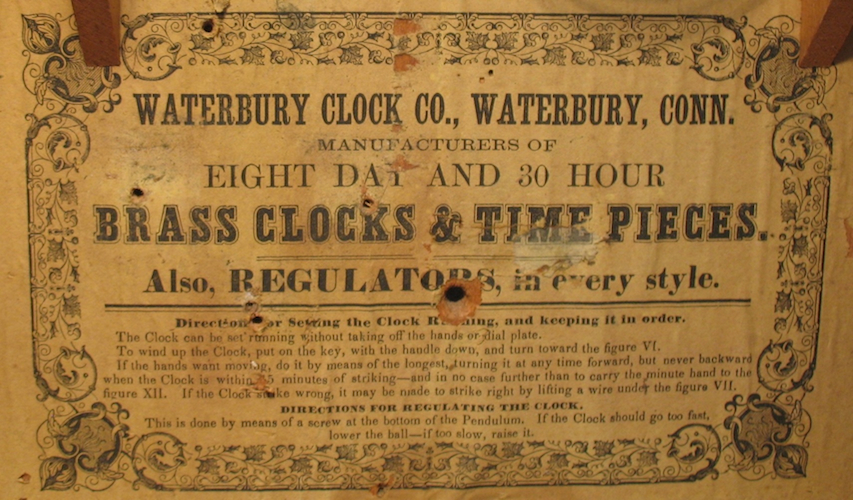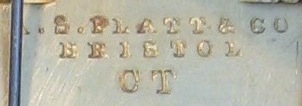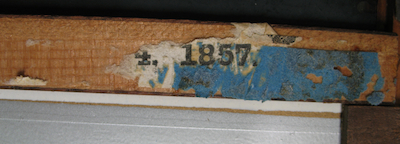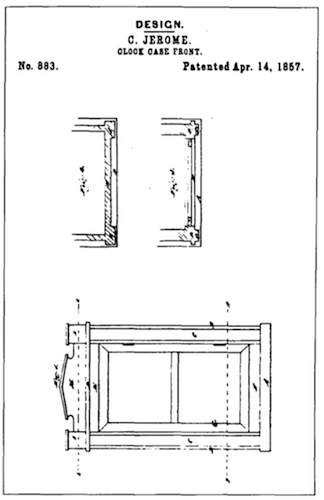The 30-hr spring-driven version of Jerome’s patent case, made by the Waterbury Clock Co. probably around the time Chauncey Jerome worked for them setting up their case-making shop. A couple of features of this clock help to date it. The case is a design that Chauncey Jerome developed while working for Benedict & Burnham and patented (Design patent No. 883, April 14, 1857). Benedict & Burnham formed the Waterbury Clock Co. in 1857. The movement maker, A.S. Platt & Co., went bankrupt shortly after the Jerome Manufacturing Co. folded in 1856. According to Ken Roberts in The Contributions of Joseph Ives to Connecticut Clock Technology, 1810-1862, the Platt & Co. bankruptcy was a result of Jerome’s problems. The combination of case style and the dates of Waterbury Clock Co. formation and Platt & Co. bankruptcy lead me to believe the clock was made around 1857, either while Jerome still worked in Waterbury or shortly after he left to work for William Gilbert. This case style is also found with 30-hr (see the New Haven clock) and 8-day weight-driven movements. In addition to the New Haven Clock Co., examples of Jerome patent cases have been found with labels of Chauncey Jerome, William L. Gilbert & Co, Chauncey Jerome for Benedict & Burnham, and the Waterbury Clock Co. (according to Chris Bailey).
Waterbury Clock Co. label in excellent condition
30-hr spring-driven movement with external alarm, stamped A.S. Platt & Co, Bristol, CT. This movement is very similar to movements used by the Jerome Manufacturing Co., and I believe they were all products of Platt & Co.
Rear view of Platt movement. The cutouts on either side of the escape wheel arbor are believed to be a repairman’s attempt to allow minor adjustments in position.
Detail showing maker’s stamp, “A. S. PLATT & CO/BRISTOL/CT”
A portion of the strip identifying that the case was patented April 14, 1857.
Chauncey Jerome’s only patent, Design patent 883, issued April 14, 1857.






